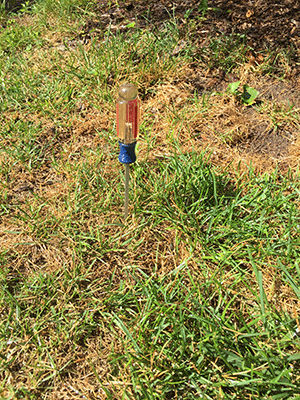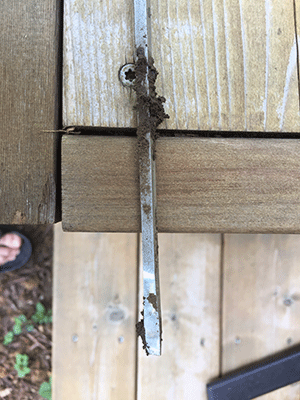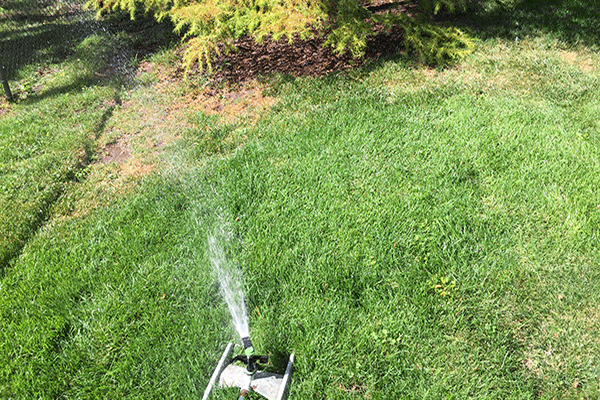In late summer, rainfall tends to be less abundant in than in spring and early summer. Like all other plants in the landscape, whether edible, functional or ornamental, trees need water to grow well. At this point in the season, there is a critical need for water as fruit and shade trees are forming buds for next year’s growth.
We often focus most of our attention on watering newer trees - and they are less tolerant of dry soils than established trees - but mid-size and larger trees still require adequate moisture. The advantage that larger trees have over small ones is simply the capacity to draw moisture from a larger volume of soil due to a larger, established root system.
 Using a probe, like a long bladed screwdriver, is a good way to measure your soil's current moisture level.
Using a probe, like a long bladed screwdriver, is a good way to measure your soil's current moisture level. Does My Tree Need Watering?
The question of whether watering is required can be quickly answered by probing the soil at various locations around the tree with a screwdriver or similar probe. During the probing, if the metal rod enters the soil with only a moderate push, it’s a hint that moisture is adequate.
If it is resistant or hard to press into the soil, it’s probably too dry; conversely, if it slides in with no resistance at all, the soil is already sufficiently wet.
 If the screwdriver blade has mud on it, then soil moisture is high and watering is not needed.
If the screwdriver blade has mud on it, then soil moisture is high and watering is not needed. Visually, once the probe is removed, taking a look at the screwdriver blade can be helpful. If mud is sticking to it, no water is required; if dust is covering it, watering is probably in order.
How to Water?
If you check the soil and find it's dry, then it's time to water. Watering can be done in several ways – running the turf sprinkler system, laying a soaker hose on the soil surface, using a drip system and using a portable sprinkler attached to the outdoor hose spigot. All of these devices have advantages and disadvantages. They key overall is to supply moisture to the roots in a slow and deliberate manner.
Where to Apply Water?
The big difference between watering woody plants such as trees and shrubs versus herbaceous plants like vegetables, groundcovers, annuals and perennials is that tree and shrub roots usually expand extensively beyond the periphery or “drip line” of the foliage, whereas most herbaceous plants develop roots directly below the crown and shoots. As watering of dry soils should be done over the entire root system of all plants, watering woody specimens should be targeted at the area twice to three times as wide as the spread of the leaves. No matter which device you choose to accomplish this goal, the idea to keep in mind is: moist; not soggy or dry.

